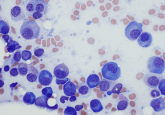Plain language summary and patient perspective of the revised STARS study

Future Oncology, our partner journal, has recently published a Plain Language Summary of Publication exploring the STARS research study. The study compared the effectiveness of surgery versus stereotactic ablative radiotherapy as a treatment for people with NSCLC.
Read the Plain Language Summary here
Abstract
What is this summary about?
This is a summary of a research study called revised STARS. The STARS study involved people with non-small-cell lung cancer, also known as NSCLC. The cancer was less than 5 cm in size and had not spread to other parts of the body (known as stage 1 cancer). The study compared the effectiveness of surgery versus a type of radiotherapy treatment, called stereotactic ablative radiotherapy (also known as SABR) as a treatment for people with NSCLC. Researchers wanted to find out how likely people were to be alive after treatment or if their cancer had grown or spread to other parts of their body (also known as progressed).
What were the results?
The study found that the long term outcomes were similar between SABR and surgery. People with NSCLC were as likely to be alive 3 years after treatment with SABR compared to surgery.
What do the results of the study mean?
SABR may be an alternative to surgery for people with stage 1 NSCLC which is less than 5 cm in size and has not spread to other parts of the body.





